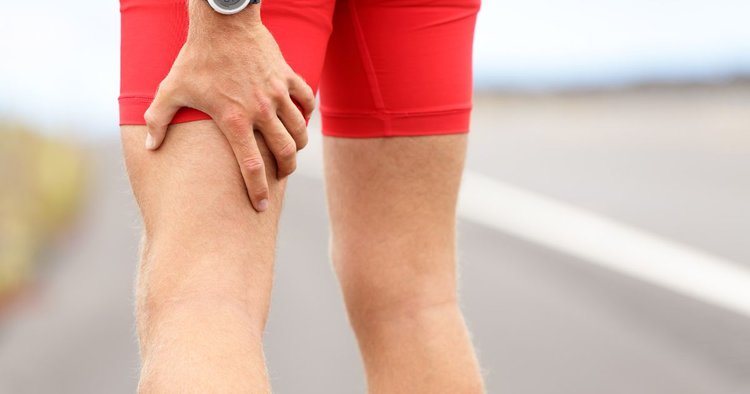The nights are getting cooler and that means Fun Run Season is upon us. For those dusting off the running shoes that means one thing, tired sore aching bodies and limbs after the first training run. With everything that sports science has to offer and no end of gimmicks on the market why is it that so many over us complain of severe muscle soreness (Delayed Onset Muscle Soreness DOMS) after increased exercise? Having completed a couple of marathons I’ve had plenty of time to contemplate this question. Unfortunately, for the most part the answer has eluded me. It’s time to see if science can answer the question “How can I stop or at least minimise DOMS?”
What is DOMS
Delayed Onset Muscle Soreness is the result of tiny tears to the muscle fibres due to unaccustomed exercise. It results in inflammation and increase in serum creatine kinase (CK) levels (Timon et al., 2016). In other words, it is a sign of damage to the body. The result of this is pain, reduced muscle strength and power. That’s why it’s hard to walk and painful to touch the muscle after the exercise. Generally, this pain will start 8 to 20 hours after exercise and peak between 24 and 48 hours afterwards (Timon et al., 2016).
What Does the Science Tell Us?
Whole Body Vibration (WBV)
Timon et al. (2016) tested WBV immediately after exercise and found a reduction in CK serum levels. Participants also reported a reduction in pain rating compared to the control group over the 24 to 48-hour period after exercise. It was hypothesised that the WBV caused increased blood flow to the effected tissues and therefore enabled an improved healing response therefore reducing the DOMS. Interestingly some benefit was found from WBV by applying it before exercise to prepare the muscles for an intense workload (Bakhtiary, Safavi-Farokhi, & Aminian-Far, 2007)
Sustained Heat Treatment
Petrofsky and colleagues in 2016 looked at the use of sustained heat to reduce DOMS. Their study found a reduction in pain and improved maintenance of muscle strength with the use of sustained heat immediately after exercise (J. Petrofsky et al., 2016). It was again hypothesised that improved blood flow enabled improved healing and therefore the reduction in DOMS symptoms.
Ice Water Immersion
Many would be familiar with athletes being told to jump into ice baths after a hard game. The main idea behind this method is that ice will reduce inflammation. The common methodology used is 1 min in water at 50C followed by 1 minute rest, repeated 3 times. However, Sellwood et al. (2007) found ice water immersion offered no benefit for pain, muscle strength and function and might even make athletes feel worse the next day! Other studies have also found heat to be superior to cold when applied immediately after exercise (J. S. Petrofsky et al., 2015)
Stretching
Warm up and stretching is advocated before exercise to reduce injury risk. more recently static stretching has been found to have a negative impact before exercise. Instead ballistic stretching is advocated as an effective warm up strategy. Unfortunately the evidence that stretching and warming up before activity reduces DOMS is limited to non-existent (LaRoche, 2006).
Massage
Sports massage has been discounted as a treatment to reduce DOMS. A study in 2004 found that massage gave no local effects to reduce DOMS and gave no apparent physical gains (Jonhagen, 2004). It is therefore not a recommended treatment to reduce DOMS
Compression Garments
Most athletes are now seen wearing some form of compression garment. Do they really work or is this another gimmick? In 2013, a meta-analysis examining several studies into compression garments found that they do in fact reduce the severity of DOMS and improve the recovery of muscle function. Furthermore, there was a reduction of serum levels of CK which is a key indicator of muscle damage. The authors concluded that compression garments should be recommended to both elite and recreational athletes after strenuous exercise to minimise the effects of DOMS (Hill, Howatson, van Someren, Leeder, & Pedlar, 2013).
Conclusion
You’ve decided to enter a fun run or start that health kick. If you haven’t done much exercise for a while then chances are your muscles will start aching about 8 hours after exercise and will progressively get worse until 48 hours later. So, to minimise those DOMS try some sustained heat treatment like a warm bath after exercise. If you have compression garments wear them after exercise. Finally, if you have access to Whole Body Vibration give it a try. Just remember after 48 hours the pain should have reduced or disappeared and if you keep up the regular exercise DOMS is less likely to occur.
Comments and Feedback always welcome.

